
Magento 2 Customer Segments: Steps, Conditions and Attributes
Did you know that personalized marketing can lead to a 20% increase in sales? Magento 2 customer segments help you run personalized campaigns. By dividing your customer base into specific groups, you can create targeted marketing campaigns. This article covers the importance of customer segments and how they help marketing campaigns.
Key Takeaways
- Personalized marketing with Magento 2 segments increases sales.
- Create specific customer groups for effective, tailored Magento marketing.
- Identify and engage at-risk customers to reduce churn.
- Focus ad budgets on high-value customer segments for better ROI.
- Use segmentation data to understand customer preferences and trends.
What are Magento Customer Segments?

Magento customer segments allow store owners to segment their customers on various attributes and conditions.
These segments enable targeted marketing, personalized user experiences, and improved customer engagement.
These segments are based on various properties. Properties include customer address, order history, and shopping cart contents. By creating targeted segments, businesses can display personalized content and promotions to specific customers.
Importance of Magento 2 Customer Segmentation
| Reasons | Explanations |
|---|---|
| Targeted Marketing | Customer segments allow businesses to tailor marketing messages to specific groups. It leads to higher engagement. It also leads to higher conversion rates. |
| Personalized User Experience | By understanding customer preferences, businesses can offer personalized product recommendations. They can also offer personalized content. It improves customer satisfaction. It also improves loyalty. |
| Improved Customer Retention | Segmentation helps identify at-risk customers. Businesses can proactively engage these customers. They can use targeted incentives and support. It reduces churn. |
| Optimized Ad Spending | Segments enable businesses to allocate ad budgets more effectively. They can focus on high-value customer groups. It increases ROI. |
| Enhanced Business Intelligence | Analyzing segment behavior provides valuable insights. These insights relate to customer preferences and trends. This data-driven approach helps businesses make informed decisions. It also helps improve overall performance. |
Steps to Segment Customers in Magento 2
1. Enable customer segments:
- Go to Stores > Settings > Configuration in the Admin sidebar.
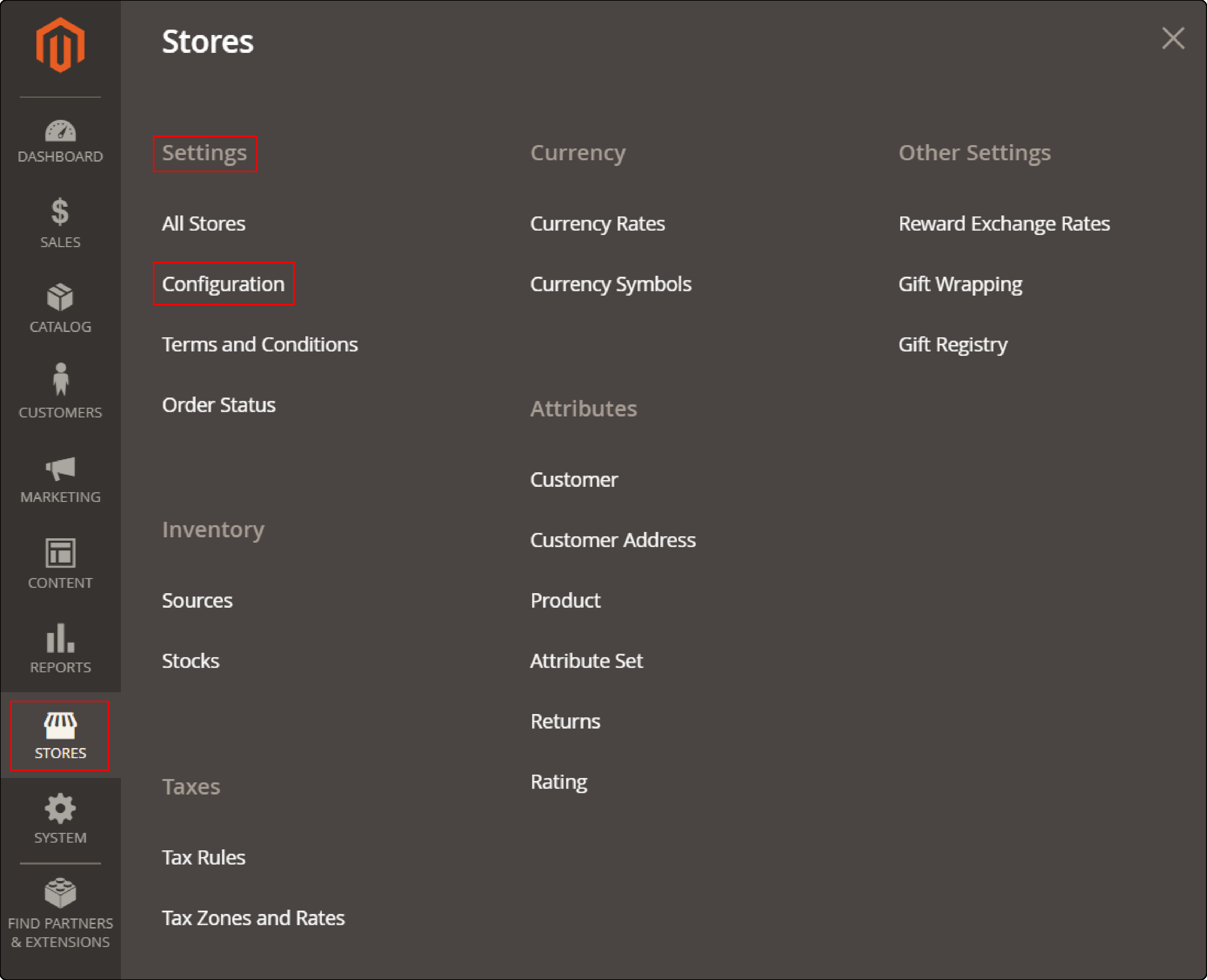
- Expand Customers and choose Customer Configuration.
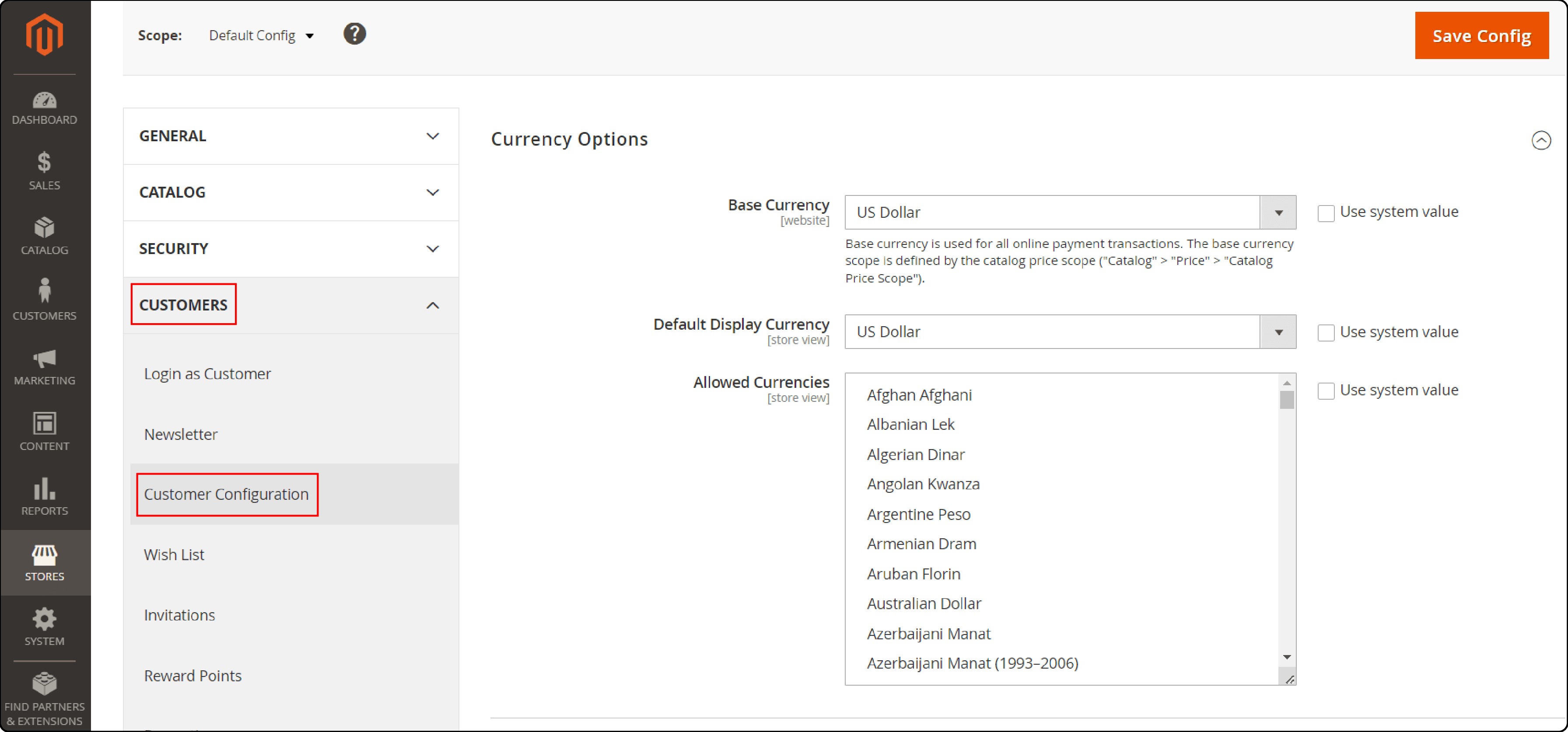
- Expand the Customer Segments section.
- Set Enable Customer Segment Functionality to Yes.
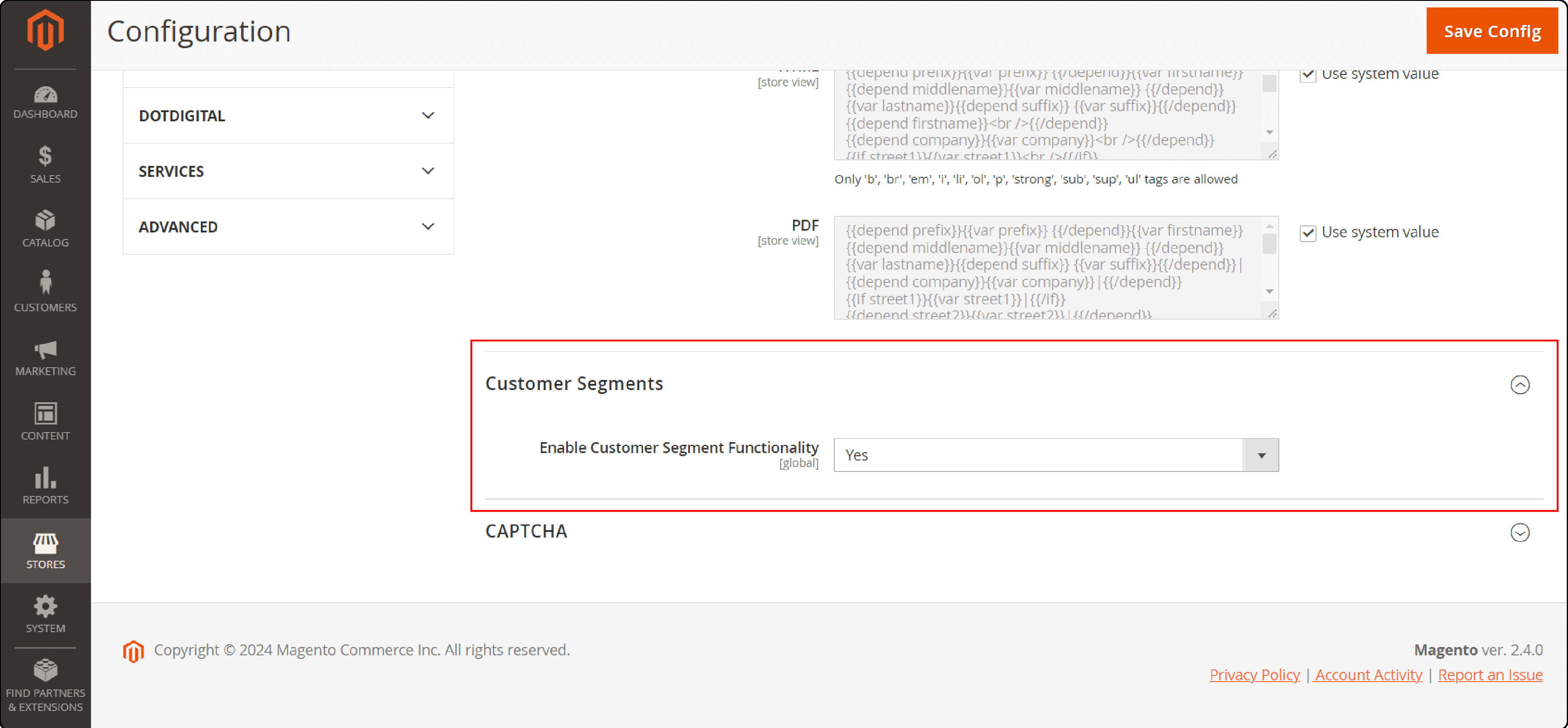
- Click Save Config.
2. Add a new customer segment:
-
Navigate to Customers > Segments in the Admin sidebar.
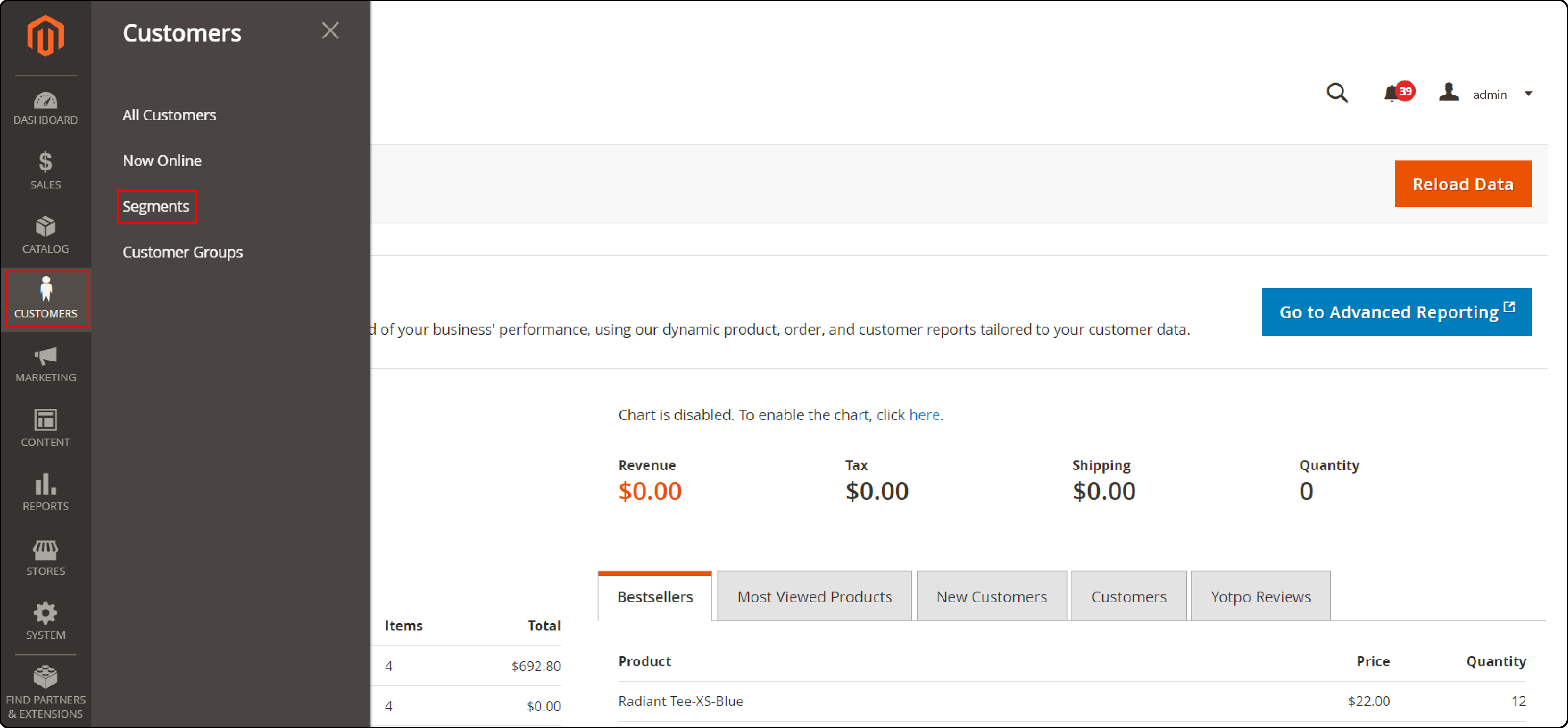
-
Click Add Segment in the upper-right corner.
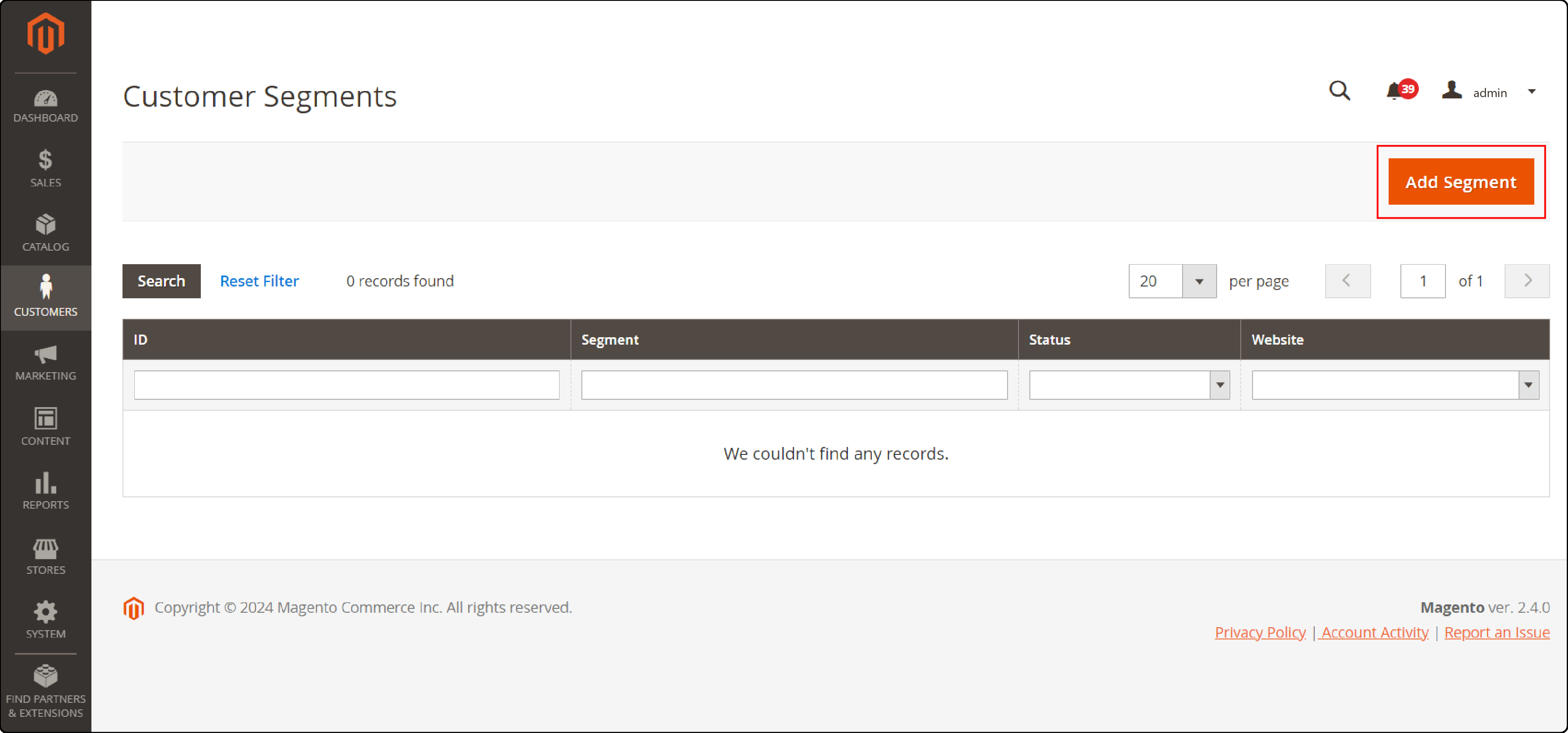
- Enter a Segment Name and Description.
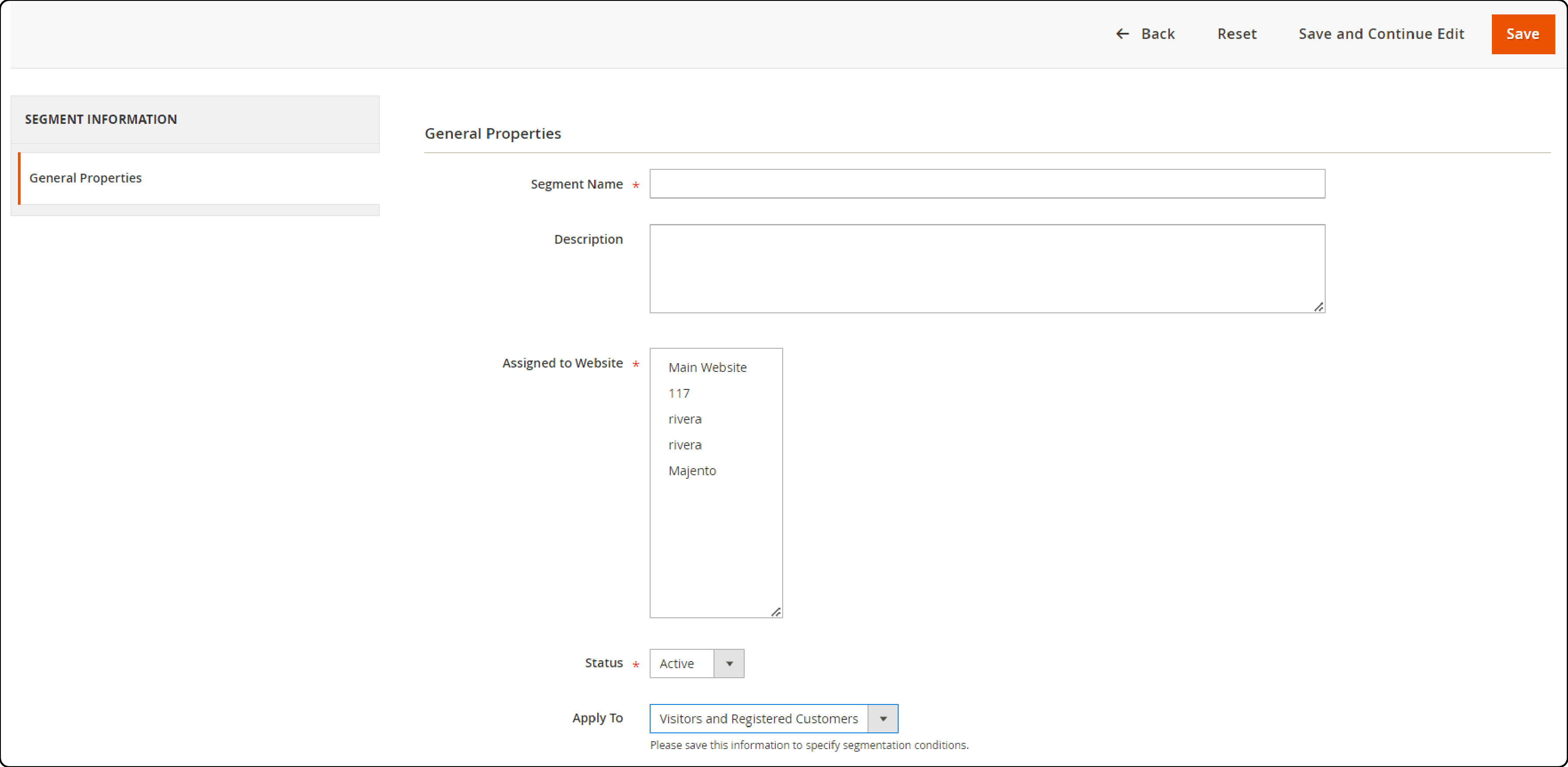
-
Set Assigned to Website to the appropriate website.
-
Choose the customer types to Apply to (Visitors and Registered Customers, Registered Customers, or Visitors).
-
Click Save and Continue Edit.
3. Define the segment conditions:
- Click Conditions in the left pane.
- Click the Add () icon to display the list of conditions.

- Select the desired condition (e.g., Gender, Customer Address).
- Set the condition control option (e.g., is, contains).
- Choose or enter the condition value (e.g., female, Los Angeles).
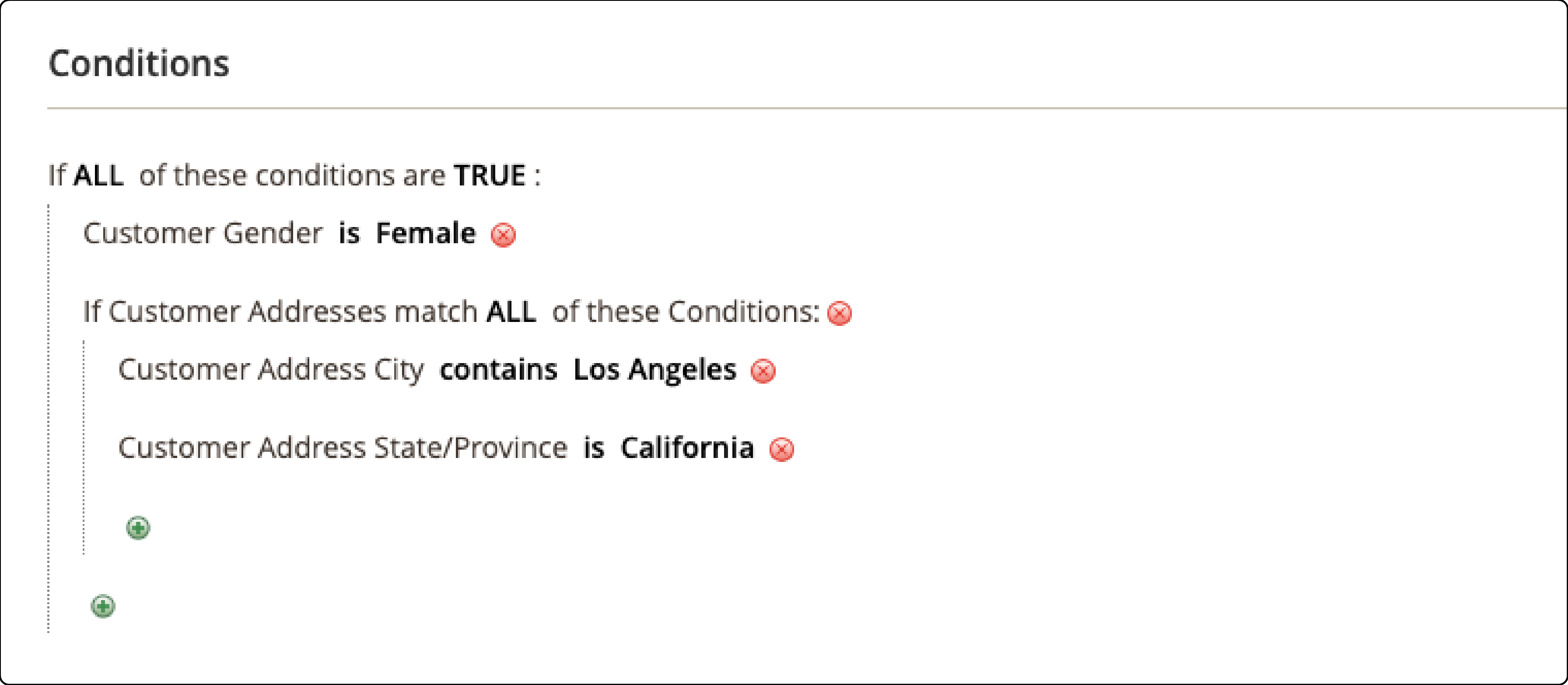
- Repeat the 5 steps above to add more conditions as needed.
- Click Save and Continue Edit.
4. Review the matched customers:
- Click Matched Customers in the left pane to display customers who match the conditions.
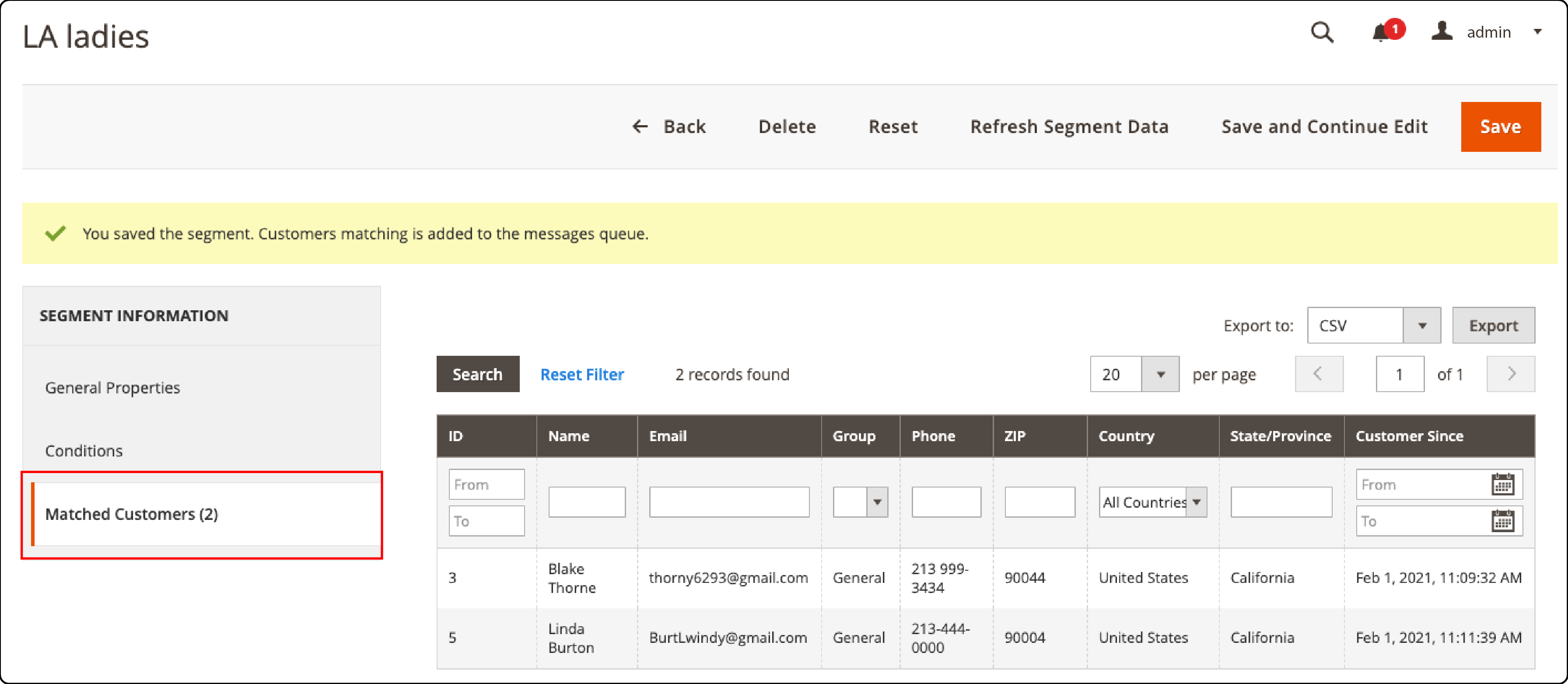
- If the list meets your goal, click Save to complete the segment.
Examples of Segment Conditions and Attributes
| Attribute | Description |
|---|---|
| Customer Address Fields | Define any address fields, such as city or country. Any address in a customer's address book can match these conditions for the customer to match. Specify that only default billing or shipping addresses can be used to match a customer. Customer address attributes are available only for logged-in customers. |
| Customer Information Fields | Define miscellaneous customer information. It includes Customer Group, name, email, newsletter subscription status, and Store Credit balance. Customer information is available only for logged-in customers. |
| Cart Fields | Base cart properties on quantity or value. Quantity can be line items or total quantity. Value can be total, tax, or gift card value of the cart contents. |
| Products | Reference products currently in the shopping cart or wish list. Reference products previously viewed or ordered. Set a date range for when it occurred. Define products using product attributes. |
| Order Fields | Define past order characteristics based on billing/shipping address, total (or average) amount or quantity of orders, or total number of orders. Set a date range for when it occurred and the order status of matching orders. Available only for logged-in customers. Conditions set for shoppers who are not logged in stop working when they log in. |
How Segments Can Be Used for Marketing
1. Email Marketing
Customer segments enable targeted email campaigns. Send personalized content and offers to specific segments. It improves email relevance and engagement. It also leads to higher conversion rates.
2. Product Recommendations
Use customer segments to display relevant product recommendations. Base recommendations on a customer's segment membership. It enhances the shopping experience. It also increases the likelihood of purchases.
3. Retargeting Ads
Create targeted ads for specific customer segments. Show these ads on social media and other platforms. Retargeting helps bring customers back to your Magento store. It also encourages them to complete their purchases.
4. Loyalty Programs
Offer tailored rewards and incentives to high-value customer segments. It helps to retain loyal customers. It also encourages them to make repeat purchases. Segment-based loyalty programs foster long-term customer relationships.
5. Content Personalization
Customize website content and offers based on a visitor's segment. It creates a more personalized browsing experience. Personalization helps to guide customers towards relevant products. It also increases the chances of conversion.
FAQs
1. How do cart price rules work with Magento 2 customer segments?
Cart price rules can be tailored to specific segments in Magento 2. It means you can offer discounts and promotions of a specific number of products to selected customer groups based on their segmentation criteria.
2. What is the Magento 2 customer segmentation extension?
The Magento 2 customer segmentation extension is a tool that enhances the built-in segmentation features. It allows for more detailed and advanced segmentation. Hence, Magento hosting enables better-targeted marketing campaigns and personalized user experiences.
3. How can I create a customer segment based on customer attributes?
To create a customer segment, navigate to Customers > Segments in your Magento Admin. Define the segment using various customer attributes like purchase history, location, or shopping cart contents.
4. Is the segmentation feature compatible with Magento marketing tools?
Yes, segmentation is fully compatible with Magento marketing tools. You can integrate segments with email campaigns, product recommendations, and retargeting ads to enhance your marketing efforts.
5. Where can I find a user guide for setting up segmentation lists in Magento 2?
The Magento 2 user guide provides step-by-step instructions for setting up segmentation lists. You can find this guide in the Magento documentation section on their official website.
Summary
Magento 2 customer segments significantly enhance your marketing efforts through personalized and targeted marketing. By leveraging customer segmentation, you can:
-
Tailor marketing messages to specific customer groups.
-
Offer personalized product recommendations and content.
-
Improve customer retention and reduce churn.
-
Optimize ad spending and increase ROI.
-
Gain valuable insights into customer preferences and trends.
To make the most of Magento 2 Customer Segments, opt for managed Magento hosting.



